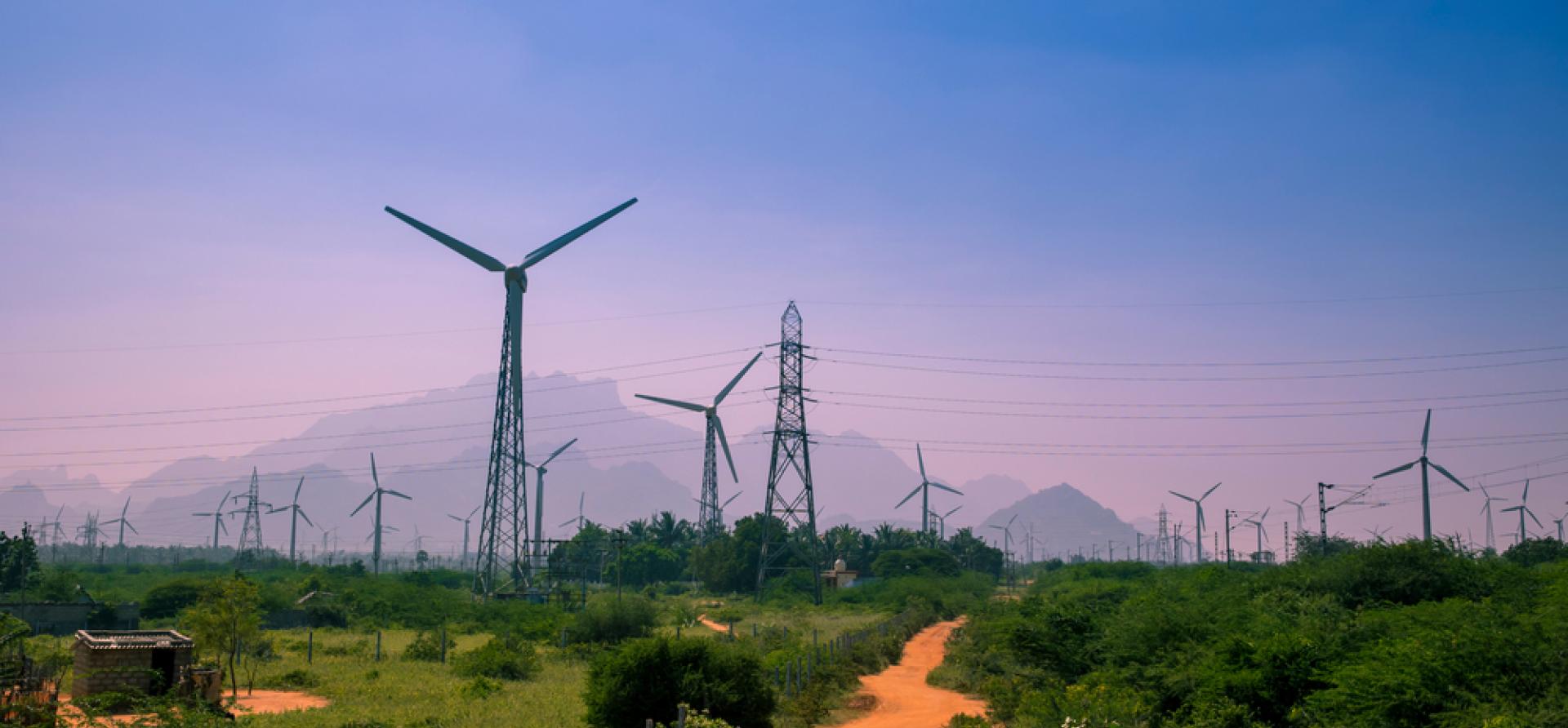The right reform path to achieve renewable goals

Key Findings
The GST on hydropower components should be lowered to 12% (as in the case of solar and wind projects) from the current 18-28%. Further, the GST on wind projects should be reduced from 12% to 5%.
The 100% exemption in Inter-State Transmission System should be extended up to 2030 for all segments of renewable energy. Stricter enforcement of Renewable Purchase Obligations and Energy Storage Obligations by electricity distribution companies is needed.
To reduce the price gap between domestic and imported modules, the enforcement of the Approved List of Models and Manufacturers in solar modules should be relaxed for open-access projects (and rooftop solar projects without government subsidy).
There should be some long-term regulatory clarity. All key national-level policies must have a five-year lock-in period before they can be extensively modified.
India aims to have 500 gigawatts (GW) of renewable energy capacity by 2030, a crucial step towards sustainable energy independence. As of April 2024, the country has successfully installed approximately ~192GW, indicating significant progress. That said, achieving the 2030 target requires more than 2.5-3 times the installation compared to the previous fiscal year.
There are some inherent complexities in the renewable energy sector, hindering the tripling of renewable energy installation and impeding investment inflow. The new government must focus on eight key areas for reform.
Easing of import barriers: To reduce the price gap between domestic and imported modules and increase the nameplate capacity, the Approved List of Models and Manufacturers (ALMM) enforcement in solar modules should be relaxed for open access projects (including group captive) and rooftop solar projects (without government subsidy). Further, the ALMM should include leading global manufacturers until March 2026. It should also include cells and other solar value chain components.
Tax breaks: The Goods and Service Tax (GST) levied on hydropower project components should be lowered to 12% (as in the case of solar and wind project components) from the current 18-28%. Further, the GST on wind projects should be reduced from 12% to 5% in the interim. Finally, to improve the commercial viability of Battery Energy Storage Systems (BESS), a lower GST rate should be applied to the sale of BESS-integrated systems and BESS-components — batteries and cell modules — for the next five years.
That apart, Electricity Duty and Cross Subsidy Surcharge should be avoided for the input power of storage projects. A five-year custom duty exemption on the import of various other components required for BESS should also be granted.
Subsidy support: Instead of having a combined production linked incentive (PLI) scheme for integrated photovoltaics (PVs), there should be separate, stage-wise output-based disbursal. PLI should also include ancillary components production. The Pradhan Mantri Kisan Urja Suraksha evam Utthaan Mahabhiyan (PM-KUSUM) scheme should be customised to fit the local context and energy-water-agriculture nexus. States where KUSUM has underperformed must offer enhanced financial support to the farmers, such as increased subsidy rates, reduced interest rates, extended repayment periods, maintenance support, etc. For solar rooftops, ensuring a suitable feed-in tariff for surplus units post-settlement is necessary.
Regulatory reforms: The 100% exemption in Inter-State Transmission System (ISTS) should be extended until 2030 for all segments of renewable energy, including offshore wind.
Stricter enforcement of the Renewable Purchase Obligations (RPOs) and Energy Storage Obligations (ESOs) by electricity distribution companies (discoms) is needed. A minimum penalty of Rs1 per kilowatt-hour (kWh) of annual energy shortfall under RPO must be strictly implemented. The same should apply if transmission losses exceed a pre-fixed target across states on all obligated entities. For solar rooftops, a specialised agency should bridge customers and discoms on awareness, outreach and handholding. Net metering regulations vary widely among states, leading to unnecessary complications. Streamlining these regulations, including an annual settlement cycle to address seasonal fluctuations, is crucial. Special environmental approvals and forest clearance windows, as well asr prior clearances, can help reduce the lead time and the bid price for pumped hydro storage. The Union and state governments must collaborate on a detailed pan-India land adequacy study for wind projects. This will alleviate the complex and challenging land acquisition process that wind developers encounter.
Long-term regulatory clarity: All key national-level policies must have a five-year lock-in period before they can be extensively modified. To provide long-term clarity for all stakeholders, the RPO trajectory must be fixed for at least the next five years.
Market reforms: States should strictly adopt the time-of-day tariff for commercial and industrial (C&I) consumers from 2025 and extend it to residential consumers from 2026. All generating resources should be pooled and shifted to the Security Constrained Economic Dispatch (SCED) system for more efficient utilisation and price discovery. Market coupling of power exchanges is needed for better price discovery and integration of renewable energy. The power ministry should consider a pilot power exchange-based Contract for Difference (CfD) project for a small renewable energy capacity for demonstration purposes. Peer-to-peer power sales and virtual net metering would facilitate energy exchange and distribution for houses with limited rooftop space.
Financing reforms: Financing structures, such as an InvIT or an aggregated bond, must be implemented to unlock the developers’ capital. Government-owned energy funders should also aggressively increase their debt exposure for open-access renewable energy projects. The government must offer special incentives to financial institutions for rooftop solar lending.
Emphasis on research & development (R&D): To increase the competitiveness of the domestic players, PV manufacturers with an annual production capacity of more than 1GW must be encouraged to invest at least 3-5% of their gross revenue (other manufacturers, 1-3%) in R&D activities.
This article was first published in Hindustan Times.















